Synergy Between NK Cells and Monocytes in Potentiating Cardiovascular Disease Risk in Severe COVID-19
- PMID: 38989579
- PMCID: PMC11448863
- DOI: 10.1161/ATVBAHA.124.321085
Synergy Between NK Cells and Monocytes in Potentiating Cardiovascular Disease Risk in Severe COVID-19
Abstract
Background: Evidence suggests that COVID-19 predisposes to cardiovascular diseases (CVDs). While monocytes/macrophages play a central role in the immunopathogenesis of atherosclerosis, less is known about their immunopathogenic mechanisms that lead to CVDs during COVID-19. Natural killer (NK) cells, which play an intermediary role during pathologies like atherosclerosis, are dysregulated during COVID-19. Here, we sought to investigate altered immune cells and their associations with CVD risk during severe COVID-19.
Methods: We measured plasma biomarkers of CVDs and determined phenotypes of circulating immune subsets using spectral flow cytometry. We compared these between patients with severe COVID-19 (severe, n=31), those who recovered from severe COVID-19 (recovered, n=29), and SARS-CoV-2-uninfected controls (controls, n=17). In vivo observations were supported using in vitro assays to highlight possible mechanistic links between dysregulated immune subsets and biomarkers during and after COVID-19. We performed multidimensional analyses of published single-cell transcriptome data of monocytes and NK cells during severe COVID-19 to substantiate in vivo findings.
Results: During severe COVID-19, we observed alterations in cardiometabolic biomarkers including oxidized-low-density lipoprotein, which showed decreased levels in severe and recovered groups. Severe patients exhibited dysregulated monocyte subsets, including increased frequencies of proinflammatory intermediate monocytes (also observed in the recovered) and decreased nonclassical monocytes. All identified NK-cell subsets in the severe COVID-19 group displayed increased expression of activation and tissue-resident markers, such as CD69 (cluster of differentiation 69). We observed significant correlations between altered immune subsets and plasma oxidized-low-density lipoprotein levels. In vitro assays revealed increased uptake of oxidized-low-density lipoprotein into monocyte-derived macrophages in the presence of NK cells activated by plasma of patients with severe COVID-19. Transcriptome analyses confirmed enriched proinflammatory responses and lipid dysregulation associated with epigenetic modifications in monocytes and NK cells during severe COVID-19.
Conclusions: Our study provides new insights into the involvement of monocytes and NK cells in the increased CVD risk observed during and after COVID-19.
Keywords: SARS-CoV-2; atherosclerosis; cardiovascular diseases; killer cells, natural; monocytes.
Conflict of interest statement
None.
Figures
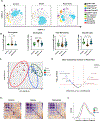
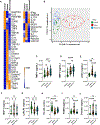
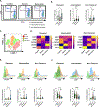
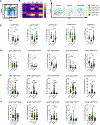


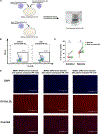
Comment in
-
Innate Immune Dysregulations and Cross Talk in COVID-19: Novel Players in Atherogenesis.Arterioscler Thromb Vasc Biol. 2024 Oct;44(10):2223-2225. doi: 10.1161/ATVBAHA.124.321415. Epub 2024 Aug 8. Arterioscler Thromb Vasc Biol. 2024. PMID: 39114915 Free PMC article. No abstract available.
References
Publication types
MeSH terms
Substances
Grants and funding
LinkOut - more resources
Full Text Sources
Medical
Miscellaneous

